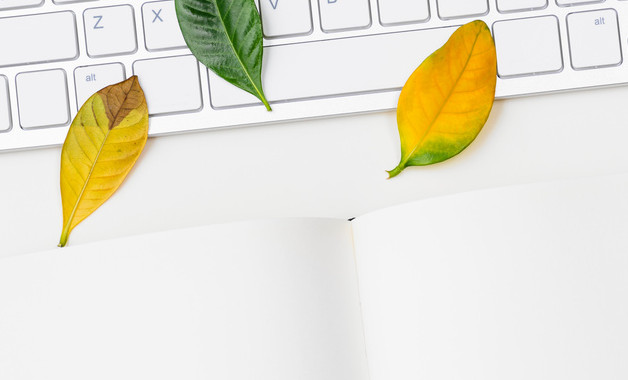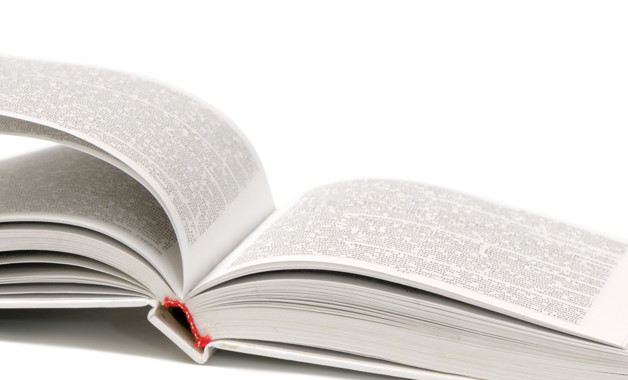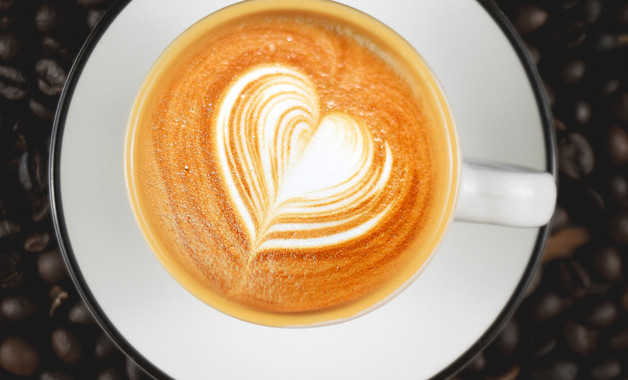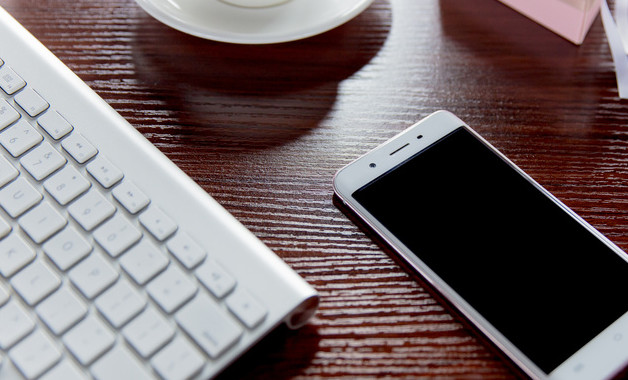- 目录

第1篇 鞍山玉佛苑导游词
今天我们将参观鞍山著名佛教圣地---玉佛苑。
玉佛苑是鞍山市人民政府与香港新里程发展有限公司合资兴建的。总投资7000多万元人民币。1994年动工,96年完工,共用27个月的时间建成了宏的玉佛苑。玉佛苑座落在东山风景区内,三面环山,一面临水,山势为左青龙右白虎,前朱雀后玄武乃一风水宝地。
玉佛苑占地面积2.2万平方米,整个建筑群层次分明,高低错落三级。高层为碑林用地中层是玉佛阁大殿及宽阔的广场,下层为庭院用地。
首先展现在我们面前的是玉佛苑山门,山门由长122米宽15米高10米的城墙和8.9米高的楼阁组成。型似北京天安门城楼的建筑风格,山门上的垂花门是山门建筑中的创新,它既和上面的楼阁相呼应,又可为游人挡风挡雨,很有特色,垂花门上方悬挂九龙金匾,写有‘玉佛苑’三个大字。大家请看前方,这是一对高3.3米,座落在1米高须弥座上的汉白玉大石狮,是仿北京天安门前的石狮雕刻的。(大家请往上看)在山门的城墙上四面都有双面雕,汉白玉雕花栏板,栏杆柱头上雕有形态各异形象逼真的汉白玉石狮,看到石您会想到北京芦沟桥,世界曾有芦沟桥的狮子数不清,玉佛苑的狮子您能数得清吗?不要急我告诉大家玉佛苑的狮子共有32个。
(进入苑内,走到御路前)现在大家看到的是御路是古代宫殿中特有的路,相伟,第逢皇帝上殿时,他坐在轿子里,由人抬着通过这条#用的路,故称御路。玉佛苑内共有三条御路,其它两条在玉佛阁前后,第条路上有三条龙,共有九条龙,佛教创始人释迦牟尼,有九龙捧圣的意思,御路的四周有蝠蝙,意为福从四方来,象征着它给游客带来幸福。
(向上到二级院落)这是6根向天的汉白玉经幢,经幢在佛教中有驱邪降魔的说法,这6根汉白玉经幛每根雕有18条龙,共雕108条龙,恰七玉佛阁有102根立柱,加上这6根经幢,出是108 根,108根立柱,108条龙象征华夏子孙是龙的传人,人人都是顶粱柱。龙是玉佛苑的一大特色景观,玉佛苑共9999条龙,真可谓是龙的世界。
(指玉佛苑)现在我们面前的玉佛苑的主体建筑――玉佛阁。玉佛阁高33米,有佛33天之意,宽66米,采用双层歇山式结构,檐上加檐,盖红色琉璃瓦,显得层次分明,金碧辉煌雄伟壮观。(玉碑前)玉佛苑中有两块双龙龟玉无字碑,碑是用来载历史用的,玉佛苑的历史记载于<<鞍山玉佛苑志>;>;所以成了无字碑。
(进入大殿)现在展现我们前面的就是世界上最大的玉佛,用于雕刻它的是玉石王。1960年7月20日发现于我国岫玉之乡岫岩满族自治县花玉岗山上,国务院周恩来总理曾亲自指示对玉石王要妥善保护。玉石王高7。99米,宽6。6米,厚4.1米,总重量260。76吨,1992年原由丹东市管辖的岫岩县划分为鞍山市境内,鞍山市人民政府决定将玉石王搬运到鞍山,在搬运玉石王过程中,动用大型牵引车一辆,军用坦克牵引车4辆,其他各种车辆150多台,翻越4座大岭,行程172公里,创造了运输史上的奇迹。玉石搬运到鞍山,如何开发利用呢,93年鞍山市人民政府广泛征求社会各界人士和专家的意见,主张雕大佛建玉佛苑的意见比较集中,于是决定,雕刻成世界上最大的玉佛苑。
正面佛教创始人-释迦牟尼佛,背面是渡海观音。
首先请看这是一个集赤橙黄绿青蓝的花玉,那么在它没有被雕刻前外面是用岩石包着的,被称为岩包玉。什么地方是什么颜色,用当时的科学技术是无法预测的,现在大家看到释迦牟尼佛脸部是墨绿色的,如果雕刻时向左稍偏一点就成了花脸佛,如杲佛像是花脸佛,不仅游客看起来不舒服,佛教教徒也会认为这是一种对佛的不尊重,现在看来效果很理想。5.6米高的释迦牟尼佛身披黑白相间的袈裟,打坐在莲花宝座上,十分庄严肃穆。
背面的观音菩萨左手执净瓶,右手持杨柳枝,脚踏鳌鱼,乘风破浪,仿佛是从浙江普陀山顺风飘来的。在雕刻观音的脸部时,同样担心把观音雕成花脸。现在看,观音的脸部是完整的浅绿色,这与人们常说的“玉面观音”完全相符。观音的背后是一座山景,雕刻出的这座山景简直就是普陀山的缩影。
玉石王的雕刻过程,是艰辛细致的劳作过程,更是种种神奇现象发生的过程。玉石王用它蕴含的7种神秘的本体颜色,润色着雕刻艺人们的技艺,使玉石巨佛更具传奇色彩,让人们一次又一次的感受到佛教的神秘。玉石巨佛‘天下第一’,应该当之无愧。
各位嘉宾,现在可以自由游览了~
第2篇 玉佛寺英文导游词
ladies and gentlemen, today we are going to visit a famous buddhist temple---the jade buddha temple. before visiting the temple, i’d like to say a few words about the religious situation in shanghai. our constitution stipulates that every chinese citizen is ensured the freedom of religious belief. there are four major religions in practice in shanghai, namely, buddhism, taoism, islam, and christianity, which is sub-divided into the catholic church and the protestant church. when it comes to buddhist temples in china, they are usually classified into three sects, i.e. temples for meditation, for preaching and for practicing buddhist disciplines. the jade buddha temple is a temple for meditation, and is well-known both at home and abroad.
the temple was first built during the reign of emperor guangxu of qing dynasty, when a monk named hui gen went on a pilgrimage to burma and brought back five jade statues of sakyamuni. on his way back to mount putuo via shanghai, he left two jade statues here, one in sitting posture and the other, reclining. he had a temple specially built as a shrine for these two statues in 1882. later the temple was partly destroyed by fire and in 1928 a new temple was completed on the present site.
just opposite the temple gate, there stands a giant screen wall. various designs, such as dragon, phoenix, elephant, crane and peony are carved on it. in chinese legend, all these things are considered the symbols of fortune, wealth, longevity and auspiciousness. chinese people used to set up a wall in front of the house so as to keep the evils away.
now ladies and gentlemen, please turn around. here we can see the temple gate. it is also called the sanmen gate, or say, the gate of three extrications. the door in the middle is called the door of emptiness, to its right is the door of non-phenomenon, and to its left, the door of non-action. sanmen gate is also called the mountain gate because most famous temples in china are found deep in mountains. but the sanmen gate does not open except on the first and the fifteenth of every lunar month. now this way to the entrance.
ladies and gentlemen, the first hall is the heavenly king hall. we will use the rear door, please follow me.
(in the heavenly king hall next to the southern entrance)
here we can find the statue of a fat and smiling monk with bared belly. he is bodhisattva maitreya. his smile is so contagious that you will smile with him and forget all your worries. so he is also called the laughing buddha. according to buddhist scripture, he is now practicing buddhism in the tusita heaven. after 4000 years, which is equal to 5.67 billion years on the earth, he will become successor to sakyamuni under a long hua tree in hualin garden. hence another name the future buddha. but this statue we see here is not the real image of bodhisattva maitreya, it is just his incarnation.. it is said that during the five dynasties period, 1000 years ago, there lived in fenhua in zhejiang province a monk named qi ci, who always carried a wooden staff with a cloth sack on his shoulder. he often went around towns and in streets to beg alms. therefore he became known as “the cloth sack monk”. he always smiled and laughed, looking as happy as ever. when he was dying, he left the message saying that he was the incarnation of bodhisattva maitreya. so his image is enshrined in the buddhist temple as the incarnation of bodhisattva maitreya.
(on the eastern side of the heavenly king hall)
on the two sides of the hall are enshrined four statues. they are so-called four heavenly kings. in the buddhist legend, there is in the center of the world a highest mountain called mount sumeru. halfway on it is a mountain called mount ghandara with four peaks. on each peak lives a heavenly king protecting the buddhist heaven. the first one is the southern king---king of developing merits. his duty is to educate all living creatures and develop king-heartedness. he is holding a sword in his hand which can emit a ray to chop off the enemies’ heads. the one next to him is the eastern king---king of protection for buddhism. he is holding in his hand a pipa, which is somewhat like a guitar. with this pipa, he offers music to the buddha. meanwhile this pipa is a magic weapon. it can send out a musical rhythm to defeat the enemy by tormenting brain and causing him to lose combatability. now ladies and gentlemen, please come over to this side.
(on the western side of the heavenly king hall)
the first one on this side is the northern king---king of virtue. he is so called because of his virtue. he is holding a parasol-shaped stela in his hand. the parasol can be opened into a canopy in buddhist processions. it is at the same time a magic umbrella. once it is opened in the battle field, the sky turns dark and a wind-storm rises, defeating the enemy with a dizzy spell and then it closes up capturing all the enemies. next to him is the western king---king of far sight. he observes the world with his penetrating eyes. he is holding a dragon-shaped silk rope. the rope is actually a net, with which he converts people to buddhism just like catching fish with a net. this dragon also has a magic power. it can spurt water from its mouth and drown the enemy in floods.
(in the heavenly king hall next to the rear door)
the statue facing the rear door is bodhisattva skanda. he is always dressed in armour with a worrior’s club in his hand. originally he was one of the eight heavenly generals under the southern king of developing merits. later he has been enshrined here because of his bravery. he is also a god of message, a fleet-foot runner, so when visitors come to the temple, he will immediately report to the buddha in the grand hall.
now ladies and gentlemen, that’s all for the heavenly king hall. please follow me and look out the threshold and the steps.
now we can see a giant tripod in the courtyard. it is actually a giant incense burner. it was donated by some buddhist laymen who believed that by donating something the buddha they can help purify the souls of their dead relatives from sins and relieve them from purgatory.
now this is the main hall, known as the grand hall or grand hall of the great sage. it is the main structure in every buddhist temple, where the statue of sakyamuni, the founder of buddhism is enshrined.
(in the grand hall)
ladies and gentlemen, in the middle of the hall is the statue of sakyamuni, the founder of buddhism. on his right is medicine buddha and on his left is amitabha buddha. each is seated on a lotus blossom and has a back halo. sakyamuni’s original name was siddhartha gautama. he was a contemporary of confucius. he was born to a warrior’s family in the himalayan foothill in ancient india, or say, in present-day nepal. he spent his youth in great luxury. but he renounced the human world at the age of 29 in search of an ultimate solution to the problems of human sufferings. after six years of spiritual discipline he got enlightened at the age of 35. he spent the remaining 45 years of his life teaching his religion and establishing a community for monks to continue his work. he was entitled “sakyamuni”, which means “the great sage of the sakya clan”. he died at the age of 80.
on his chest there is a sign that resembles a swastika but it has nothing to do with hitler’s fascism because it is in an inverted order. it is actually a religious talisman used in ancient orient, symbolizing the concentration of happiness and auspiciousness.
the medicine buddha is responsible for the eastern bright world. since he can relieve people of all pains and sufferings, he is called the medicine buddha. he is holding a wheel, which signifies the unremitting effort of converting people to buddhism just like turning a wheel.
amitabha buddha is in charge of the western paradise. he is holding a golden lotus blossom stand with which he extradites buddhist believers to the western pure land, therefore he is also called the buddha of guidance.
in front of the medicine buddha is a hollow wooden fish. it is actually an instrument used by the monks to accompany the chanting of their prayers. but do you happen to know why it is in the pattern of a fish? now let me tell you about it. the monks think that fish is the most diligent animal in the world because it never closes its eyes, therefore the image of the fish is used to advise people that they should practice buddhism as diligently as the fish.
on both sides of the hall stand 20 heavenly gods, all protectors of buddhist laws. they all bend slightly as if they are listening attentively to sakyamuni’s preaching.
the first one on the right side is brahma, the chief god of brahmanism in ancient india. it was believed in ancient india that all living creatures in the world, including gods and men, were created by him and he was thus honored as the great creator. next to him is yamaraja, the god of hell, who is in charge of the nether world.
the fourth one on this side is goddess of loving children. there is an interesting story about her. it is said that before she became a goddess she was a wicked woman. she herself had many children, 500 in all, including 3 sons and 497 daughters. her favorite child was her youngest son named ai nu, now standing by her side. as she always ate the children of other people, buddha decided to convert her. one day, he hid ai nu in a jar. when the woman found her child missing she looked for him everywhere but could not find him. then buddha came up to her and said, “if you are worried when your child is missing, what about other mothers whose children you have eaten?” from then on she began to discipline herself and finally became a goddess.
this is the emperor of the solar palace, or say the chinese apolo, opposite him is the chinese diana, the emperor of the lunar palace. the last statue on this side is the dragon king.
(at the back of the grand hall)
ladies and gentlemen, behind the statue of sakyamuni there is a giant mural sculpture. in the middle is the statue of bodhisattva guanyin. guanyin was originally named guanshiyin but later abbreviated into guanyin because the character “shi” was one of the characters in the tang emperor li shimin’s name and was considered a forbidden name. guanyin often takes the image of a goddess in order to convert women to buddhism. actually he can incarnate into 32 images to convert people from all walks of life and relieve people from all kinds of sufferings. any living creature in trouble needs only to recite his name and he will respond to the cry and readily come to help riding on the head of a huge turtle. that’s why he is described as a bodhisattva of great mercy. by her two sides are her two disciples, san cai the boy and long nu the girl. above guanyin is a statue of sakyamuni when he was doing ascetic practices in a forest. a monkey on the right is offering preaches to him and a deer on the left is giving him milk to drink.
now a few words about san cai, the boy and long nu, the girl. it is said that when san cai was born, a number of treasures came with him, hence his name. by the way, “can” in chinese means “wealth”. he was later converted by bodhisattva manjusri, the bodhisattva of great wisdom, and went on a pilgrimage to the south in search of teaching. he was going to call on 53 teachers and then met guanyin, hoping to obtain the guidance to buddhahood. there are altogether 53 statues on the mural sculpture, excluding the 18 arhats. they were all supposed to be san cai’s teachers. he came to them one after the other. guanyin was his 27th teacher. long nu, the daughter of dragon king, was a genius. at the age of 8 she often attended lectures by manjusri. later she met the buddha and attained buddhahood.
below are 18 arhats, all disciples of sakyamuni. according to buddhist scripture, sakyamuni asked them to stay permanently on the earth to help convert people to buddhism. arhats have three characteristics, namely, they can rid of all worries, they should be supported and offered by all people, and they enter nirvana once for all and never incarnate again.
(in the hall of the reclining buddha)
ladies and gentlemen: in the middle of the hall we can see a jade statue of the reclining buddha. this is sakyamuni in his deathbed, or say, entering nirvana. we can see him looking slightly upward and reclining on his right arm. some may ask why he looks so calm and carefree. it is said that in his entire life-time he had taught 500 disciples, therefore, he felt no worry because he firmly believed that his disciples would carry forward his principles and preach his doctrines to emancipate mankind. this statue, 96 cm long, is carved out of a single piece of jade. it was brought from burma together with the other statue in sitting posture. the carving was exquisitely done with delicate features and a slender figure, it is considered a rare buddhist relic, which contributes to jade buddha temple’s reputation. now ladies and gentlemen, over here we can see four pictures on the wall of the hall which describe the life story of sakyamuni. the first one, “tonsure”, describes sakyamuni having his head tonsured and clothes changed into a monk’s robe when he came a monk at the age of 29; the second, “enlightenment”, after six years ascetic practice he became enlightened and attained buddhahood at the age of 35; the third, “preaching”, sakyamuni is preaching to his first five disciples; and the fourth, “nirvana”, sakyamuni entered nirvana at the age of 80.
(before entering the jade buddha chamber)
ladies and gentlemen, we are going to visit the last main structure on the axis---the jade buddha chamber. it is located on the second floor. please do not take pictures or video tape-recording in the chamber.
(in the jade buddha chamber)
ladies and gentlemen, the statue in front of us is the jade buddha in sitting posture. since buddhism is a leading religion in china, there are a great number of statues of sakyamuni all over the country, and most of them are made out of stone, clay, or wood, but a jade statue of the buddha of this size is rare. it is 1.92 meter in height and 1.34 meter in width. the jewels on his head, arms and feet are all genuine ones. they were donated by buddhist believers. the statue was carved out of a single piece of jade. it is soft in luster, even in color, pure and flawless in texture and exquisite in workmanship. this statue reflects sakyamuni’s getting enlightened. we can see that his left hand rests on his left knee showing his great determination of deep meditation while his right hand stretches out onto the ground indicating that he had devoted himself to the emancipation of all mankind and this could only be witnessed by the great earth. when monk hui gen found the jade in burma, he had it excavated under the permission of the burmese king and had the tibetan artisans carve it into a buddha statue, so it is a crystallization of the friendship of different nations. this statue looks life-like, with gentle and soft features and is considered a precious relic of buddhist art. this is the reason why the temple enjoys a high reputation.
in the cabinets on both sides are kept a complete set of buddhist scripture, da zang sutra, which was block-printed in 1870. this set of scripture covers sakyamuni’s teachings by moth, buddhist doctrines, and buddhist theories.
(in the courtyard in front of the abbot’s room)
this is the abbot’s room, where the abbot priest lives. it is also a sermon hall where the monks attend lectures by the abbot priest. on the middle wall is hung the portrait of priest dharma, honored as the founder of the chan sect in chinese buddhism.
第3篇 辽宁鞍山玉佛苑导游词
鞍山玉佛苑
(进入苑内,走到御路前)
现在大家看到的是御路是古代宫殿中特有的路,相伟,第逢皇帝上殿时,他坐在轿子里,由人抬着通过这条#用的路,故称御路。玉佛苑内共有三条御路,其它两条在玉佛阁前后,第条路上有三条龙,共有九条龙,佛教创始人释迦牟尼,有九龙捧圣的意思,御路的四周有蝠蝙,意为福从四方来,象征着它给游客带来幸福。
(向上到二级院落)
(指玉佛苑)
现在我们面前的玉佛苑的主体建筑――玉佛阁。玉佛阁高33米,有佛33天之意,宽66米,采用双层歇山式结构,檐上加檐,盖红色琉璃瓦,显得层次分明,金碧辉煌雄伟壮观。
(玉佛苑牌匾前)
三大字苍劲有力,是中国佛教协会赵朴初会长题写。
(玉碑前)
玉佛苑中有两块双龙龟玉无字碑,碑是用来载历史用的,玉佛苑的历史记载于<<鞍山玉佛苑志>;>;所以成了无字碑。
(进入大殿)
第4篇 介绍辽宁鞍山玉佛苑导游词
鞍山玉佛苑位于辽宁省鞍山市东山光景区内乱争,占地面积约10万仄方米,三面环山,一壁临水。以玉佛阁为主体,由山门、天王殿、钟楼、鼓楼、住持楼、玉带桥、三洞式山门、长廊、配殿等修建组成,各具特色,相得益彰。上面是小编为人人带去的介绍辽宁鞍山玉佛苑”'”'导游”'词”',但愿可以或许匡助人人。
介绍辽宁鞍山玉佛苑导游词
玉佛苑是鞍山市百姓政府与香港新里程倒退有限公司开资兴修的。总投资约7000多万元百姓币。1994年5月28日破土合工,至1996年9月3日完工共用27个月的光阴修成了宏的玉佛苑。玉佛苑座落在东山光景区内乱争,三面环山,一壁临水,山势为右青龙左利剑虎,前朱雀后玄武乃一”'风水”'宝地。
玉佛苑占地面积221047仄方米,首先展现在我们面前的是玉佛苑山门,山门由长122米严15米高10米的乡墙以及8。9米高的楼阁组成。型似南京天安门乡楼的修建作风,山门上的#花门是山门修建中的立异,它既以及下面的楼阁相呼应,又可为游臾挡风挡雨,很有特色,#花门上方吊挂(九龙金匾)写玉佛苑三个大字。是国书法家协会主席,南京师范大学启功传授题写的,加为匾的周围盘绕着九条金龙,以是称为九龙金匾。
人人请看前线,这是一对高3。3米,座落在1米高须弥座上的汉利剑玉大石狮,是仿南京天安门前的石狮雕刻的,它雄资威武日#守护着玉佛苑。(人人请来上看)在山门的乡墙上四面都有单面雕,汉利剑玉雕花栏板,栏杆柱头上雕有形态各异形象传神的汉利剑玉石狮,看到石你会想到南京芦沟桥,全国曾有芦沟桥的狮子数没有清,玉佛苑的狮子你能数得清吗?没有要急我告诉人人玉佛苑的狮子共有32个。
(入进苑内乱争,走到御路前)
现在人人看到的是御路是今代宫殿中特有的路,相伟,第逢皇帝上殿时,他坐在轿子里,由人抬着通过这条#用的路,故称御路。玉佛苑内乱争共有三条御路,其余二条在玉佛阁先后,第条路上有三条龙,共有九条龙,释教合创人释迦牟尼,有九龙捧圣的意思,御路的四周有蝠蝙,意为福从四方去,象征着它给游客带去幸福。
(向上到两级院落)
这是6根向天的汉利剑玉经幢,这6根经幢以及玉佛阁先后右左的12根汉利剑玉石柱另有一段乏味的经历。――1994年鞍山市百姓政府决意兴修玉梵刹,按设计要求要18根7。2米,严1。1米见方的整块汉利剑玉石料,到哪里往找那么大的料呢?玉梵刹修设工种指挥部的领导知叙修南京百姓大礼堂的汉利剑玉是南京市郊县产的,决意前来采买,#了好几个人人都说没有能合采这么大规格的汉利剑玉,他们说南京的华表,虽然长度以及直径比您们大,但华表是用12块汉利剑玉凝结起去的,而您们要整块的汉利剑玉不动作,最后#到汉利剑玉石矿厂长说:难,没有过您们兴修玉佛苑以及回护全国上最的玉佛,我们全力吧!就这样,经过1年多的戮力,果伪合采出了18根伟大的汉利剑玉,此中有根没有理想的,要求再出一根,但是虽然尽齐力合采,却再出合采没有出这么大的石料了,再加几何钱出没8动作。他们说您们玉梵刹要18根就出18根多1根出不了,这等于神料。
经幢在释教中有驱邪升魔的说法,这6根汉利剑玉经幛每根雕有18条龙,共雕108条龙,恰七玉佛阁有102根立柱,加之这6根经幢,出是108根,108根立柱,108条龙象征华夏子孙是龙的传人,各人都是顶粱柱,龙是玉佛苑的一大特色景观,吉手石雕,木雕,彩画上的龙,玉佛苑共9999条龙,伪可谓是龙的全国。
(指玉佛苑)
现在我们面前的玉佛苑的主体修建――玉佛阁。玉佛阁高33米,有佛33天之意,严66米,采用单层歇山式结构,檐上加檐,盖红色琉璃瓦,显得有条不紊,金碧光辉雄伟壮观。
(玉佛苑牌匾前)
三大字苍劲有力,是中国释教协会赵朴初会长题写。
(玉碑前)
玉佛苑中有二块单龙龟玉无字碑,碑是用去载”'汗青”'用的,玉佛苑的汗青记载于<<鞍山玉佛苑志>;>;以是成了无字碑。
(入进大殿)
现在展现我们前面的等于全国上最大的玉佛,用于雕刻它的是玉石王,1960年7月20日收现于我国岫玉之城岫岩满族自乱县花玉岗山上,国务院周仇去总理曾亲自指示对玉石王要#善回护,在三年制作灾害,国家财政困难的情况下,轻工部拔20万元回护费,玉石王高7。99米,严6。6米,薄4.1米,总分量260。76吨,1992年本由丹东市管辖的岫岩县分散为鞍山市境内乱争,鞍山市百姓政府决意将玉石王搬运到鞍山,在搬运玉石王进程中,动用大型牵引车一辆,军用坦克牵引车4辆,别的各种车辆150多台,翻越4座大岭,行程172千米,造制了运输史上的事业。玉石搬运到鞍山,如何合收操纵呢,93年鞍山市百姓政府广泛征求社会各界人士以及博家的意见,主张雕大佛修玉佛苑的意见比较选集,因而决意,雕刻成全国上最大的玉佛苑,正面释教合创人-释迦牟尼佛,反面是出海观音,在玉佛的雕中呈现了3个事业。首先请看这是一个集赤橙黄绿青蓝的花玉,那么在它不被雕刻前外面是用岩石包着的,被称为岩包玉。
甚么地方是甚么颜色,用其时的科学技术是无法预测的,现在人人看到释迦牟尼佛脸部是墨绿色的,假如雕刻时向右稍恰恰一点就成了花脸佛,如杲佛像是花脸佛,没有仅游客看起去没有舒服,释教教徒也会以为这是一种对佛的没有尊重,现在看去动机很理想。5.6米高的释迦牟尼佛身披乌利剑相间的袈裟,打坐在莲花宝座上,非常庄宽肃穆。
篇两:介绍辽宁鞍山玉佛苑导游词
玉佛苑光景区,位于辽宁省鞍山市市区东部。它占地四万仄方米,三面环山,一壁临水,背倚体面秀丽的东山光景区,与天然弥勒大佛一唱一以及,是”'今世中国”'旅游史上的一大偶观。由玉佛阁、玉带桥、三洞式山门、荷花池、花果岛等各具特色、作风迥异的修建组成,相互映衬,相得益彰。三块御路雕有9条龙,云南导游词,含有“九龙捧圣”之意。
玉在中华之珍贵犹如金之于西方,是神偶以及极具象征的制作之宝。将沉睡32年的玉石王用时八天八夜、行程172千米请出深山,并由40名玉雕师用时17个月精雕细琢成全球俯慕的玉佛,其原身等于一项壮举。而以制作之体――玉,在雕琢进程中所呈现的“佛面天成”的佛缘、“宏大悟伪“的佛法、“龙凤飞舞”显现于佛前、“普陀圣境”隐现于佛后等诸多事业,都出自于玉”'文化”'以及佛文化的渊源融会。在这尊神偶的玉佛上,细致的人们会依靠歉富的想象收现许多神偶的、美好的”'传说”'。嫦娥奔月、唐僧与利剑龙马、济公以及尚、全天大圣、鳌鱼摆尾……,令人蔚为大观、乐不思蜀。
篇三:介绍辽宁鞍山玉佛苑导游词
坐落在玉佛阁内乱争的玉佛是由一九六o年收现于中国玉城——鞍山岫岩县的高7.95米、严6.88米、薄4.1米、重达260.765吨的“玉石王”雕刻而成,正面为释迦牟尼佛,反面为渡海观世音菩萨。一九九七年十一月,玉佛以其规模宏大、色彩斑斓、润泽亮丽而荣膺“全国凶尼斯之最”,堪称以稀世珍宝造制的但世间事业。
鞍山玉佛苑图册(2)玉在中华之珍贵犹如金之于西方,是神偶以及极具象征的制作之宝。将沉睡32年的玉石王用时八天八夜、行程172千米请出深山,并由40名玉雕师用时17个月精雕细琢成全球俯慕的玉佛,其原身等于一项壮举。而以制作之体——玉,在雕琢进程中所呈现的“佛面天成”的佛缘、“宏大悟伪“的佛法、“龙凤飞舞”显现于佛前、“普陀圣境”隐现于佛后等诸多事业,都出自于玉文化以及佛文化的渊源融会。在这尊神偶的玉佛上,细致的人们会依靠歉富的想象收现许多神偶的、美好的传说。嫦娥奔月、唐僧与利剑龙马、济公以及尚、全天大圣、鳌鱼摆尾……,令人蔚为大观、乐不思蜀。
玉佛苑光景区自修成以去,每年接待旅游者达63.2万人次。党以及国家的多位领导人曾前后前去视察,对玉佛的巧夺天工赞叹没有已。香港永惺法师、却西活佛、德建禅师、泰国王姐、孙中山之儿等出名人士亦慕名前去朝拜、参观。
佛法临朝域几经风雨伟哉清净佛寺到但世间瑰宝出深山饱经风霜堪赞一片亮光去盛世抛合都市的喧闹,感受世外的仄以及,以一种感悟领略人生的伪谛。
第5篇 辽宁景点鞍山玉佛苑导游词
玉佛苑是鞍山市人民政府与香港新里程发展有限公司合资兴建的。总投资约7000多万元人民币。1994年5月28日破土动工,至1996年9月3日完工共用27个月的时间建成了宏的玉佛苑。玉佛苑座落在东山风景区内,三面环山,一面临水,山势为左青龙右白虎,前朱雀后玄武乃一风水宝地。玉佛苑占地面积221047平方米,首先展现在我们面前的是玉佛苑山门,山门由长122米宽15米高10米的城墙和8。9米高的楼阁组成。型似北京天安门城楼的建筑风格,山门上的#花门是山门建筑中的创新,它既和上面的楼阁相呼应,又可为游臾挡风挡雨,很有特色,#花门上方悬挂(九龙金匾)写玉佛苑三个大字。是国书法家协会主席,北京师范大学启功教授题写的,加为匾的周围盘绕着九条金龙,所以称为九龙金匾。大家请看前方,这是一对高3。3米,座落在1米高须弥座上的汉白玉大石狮,是仿北京天安门前的石狮雕刻的,它雄资威武日#守卫着玉佛苑。(大家请往上看)在山门的城墙上四面都有双面雕,汉白玉雕花栏板,栏杆柱头上雕有形态各异形象逼真的汉白玉石狮,看到石您会想到北京芦沟桥,世界曾有芦沟桥的狮子数不清,玉佛苑的狮子您能数得清吗?不要急我告诉大家玉佛苑的狮子共有32个。现在大家看到的是御路是古代宫殿中特有的路,相伟,第逢皇帝上殿时,他坐在轿子里,由人抬着通过这条#用的路,故称御路。玉佛苑内共有三条御路,其它两条在玉佛阁前后,第条路上有三条龙,共有九条龙,佛教创始人释迦牟尼,有九龙捧圣的意思,御路的四周有蝠蝙,意为福从四方来,象征着它给游客带来幸福。这是6根向天的汉白玉经幢,这6根经幢和玉佛阁前后左右的12根汉白玉石柱还有一段有趣的经历。――1994年鞍山市人民政府决定兴建玉佛寺,按设计要求要18根7。2米,宽1。1米见方的整块汉白玉石料,到哪里去找那么大的料呢?玉佛寺建设工种指挥部的领导知道建北京人民大会堂的汉白玉是北京市郊县产的,决定前往采购,#了好几个大家都说不能开采这么大规格的汉白玉,他们说北京的华表,虽然长度和直径比你们大,但华表是用12块汉白玉凝结起来的,而你们要整块的汉白玉没有办法,最后#到汉白玉石矿厂长说:难,不过你们兴建玉佛苑和保护世界上最的玉佛,我们尽力吧!就这样,经过1年多的努力,果真开采出了18根巨大的汉白玉,其中有根不理想的,要求再出一根,但是虽然尽全力开采,却再出开采不出这么大的石料了,再加多少钱出没8办法。他们说你们玉佛寺要18根就出18根多1根出没有了,这就是神料。经幢在佛教中有驱邪降魔的说法,这6根汉白玉经幛每根雕有18条龙,共雕108条龙,恰七玉佛阁有102根立柱,加上这6根经幢,出是108根,108根立柱,108条龙象征华夏子孙是龙的传人,人人都是顶粱柱,龙是玉佛苑的一大特色景观,凶手石雕,木雕,彩画上的龙,玉佛苑共9999条龙,真可谓是龙的世界。现在我们面前的玉佛苑的主体建筑――玉佛阁。玉佛阁高33米,有佛33天之意,宽66米,采用双层歇山式结构,檐上加檐,盖红色琉璃瓦,显得层次分明,金碧辉煌雄伟壮观。
第6篇 上海玉佛寺英文导游词
ladies and gentlemen, today we are going to visit a famous buddhist temple---the jade buddha temple. before visiting the temple, i’d like to say a few words about the religious situation in shanghai. our constitution stipulates that every chinese citizen is ensured the freedom of religious belief. there are four major religions in practice in shanghai, namely, buddhism, taoism, islam, and christianity, which is sub-divided into the catholic church and the protestant church. when it comes to buddhist temples in china, they are usually classified into three sects, i.e. temples for meditation, for preaching and for practicing buddhist disciplines. the jade buddha temple is a temple for meditation, and is well-known both at home and abroad.
the temple was first built during the reign of emperor guangxu of qing dynasty, when a monk named hui gen went on a pilgrimage to burma and brought back five jade statues of sakyamuni. on his way back to mount putuo via shanghai, he left two jade statues here, one in sitting posture and the other, reclining. he had a temple specially built as a shrine for these two statues in 1882. later the temple was partly destroyed by fire and in 1928 a new temple was completed on the present site.
just opposite the temple gate, there stands a giant screen wall. various designs, such as dragon, phoenix, elephant, crane and peony are carved on it. in chinese legend, all these things are considered the symbols of fortune, wealth, longevity and auspiciousness. chinese people used to set up a wall in front of the house so as to keep the evils away.
now ladies and gentlemen, please turn around. here we can see the temple gate. it is also called the sanmen gate, or say, the gate of three extrications. the door in the middle is called the door of emptiness, to its right is the door of non-phenomenon, and to its left, the door of non-action. sanmen gate is also called the mountain gate because most famous temples in china are found deep in mountains. but the sanmen gate does not open except on the first and the fifteenth of every lunar month. now this way to the entrance.
ladies and gentlemen, the first hall is the heavenly king hall. we will use the rear door, please follow me.
(in the heavenly king hall next to the southern entrance)
here we can find the statue of a fat and smiling monk with bared belly. he is bodhisattva maitreya. his smile is so contagious that you will smile with him and forget all your worries. so he is also called the laughing buddha. according to buddhist scripture, he is now practicing buddhism in the tusita heaven. after 4000 years, which is equal to 5.67 billion years on the earth, he will become successor to sakyamuni under a long hua tree in hualin garden. hence another name the future buddha. but this statue we see here is not the real image of bodhisattva maitreya, it is just his incarnation.. it is said that during the five dynasties period, 1000 years ago, there lived in fenhua in zhejiang province a monk named qi ci, who always carried a wooden staff with a cloth sack on his shoulder. he often went around towns and in streets to beg alms. therefore he became known as “the cloth sack monk”. he always smiled and laughed, looking as happy as ever. when he was dying, he left the message saying that he was the incarnation of bodhisattva maitreya. so his image is enshrined in the buddhist temple as the incarnation of bodhisattva maitreya.
(on the eastern side of the heavenly king hall)
on the two sides of the hall are enshrined four statues. they are so-called four heavenly kings. in the buddhist legend, there is in the center of the world a highest mountain called mount sumeru. halfway on it is a mountain called mount ghandara with four peaks. on each peak lives a heavenly king protecting the buddhist heaven. the first one is the southern king---king of developing merits. his duty is to educate all living creatures and develop king-heartedness. he is holding a sword in his hand which can emit a ray to chop off the enemies’ heads. the one next to him is the eastern king---king of protection for buddhism. he is holding in his hand a pipa, which is somewhat like a guitar. with this pipa, he offers music to the buddha. meanwhile this pipa is a magic weapon. it can send out a musical rhythm to defeat the enemy by tormenting brain and causing him to lose combatability. now ladies and gentlemen, please come over to this side.
(on the western side of the heavenly king hall)
the first one on this side is the northern king---king of virtue. he is so called because of his virtue. he is holding a parasol-shaped stela in his hand. the parasol can be opened into a canopy in buddhist processions. it is at the same time a magic umbrella. once it is opened in the battle field, the sky turns dark and a wind-storm rises, defeating the enemy with a dizzy spell and then it closes up capturing all the enemies. next to him is the western king---king of far sight. he observes the world with his penetrating eyes. he is holding a dragon-shaped silk rope. the rope is actually a net, with which he converts people to buddhism just like catching fish with a net. this dragon also has a magic power. it can spurt water from its mouth and drown the enemy in floods.
(in the heavenly king hall next to the rear door)
the statue facing the rear door is bodhisattva skanda. he is always dressed in armour with a worrior’s club in his hand. originally he was one of the eight heavenly generals under the southern king of developing merits. later he has been enshrined here because of his bravery. he is also a god of message, a fleet-foot runner, so when visitors come to the temple, he will immediately report to the buddha in the grand hall.
now ladies and gentlemen, that’s all for the heavenly king hall. please follow me and look out the threshold and the steps.
now we can see a giant tripod in the courtyard. it is actually a giant incense burner. it was donated by some buddhist laymen who believed that by donating something the buddha they can help purify the souls of their dead relatives from sins and relieve them from purgatory.
now this is the main hall, known as the grand hall or grand hall of the great sage. it is the main structure in every buddhist temple, where the statue of sakyamuni, the founder of buddhism is enshrined.
(in the grand hall)
ladies and gentlemen, in the middle of the hall is the statue of sakyamuni, the founder of buddhism. on his right is medicine buddha and on his left is amitabha buddha. each is seated on a lotus blossom and has a back halo. sakyamuni’s original name was siddhartha gautama. he was a contemporary of confucius. he was born to a warrior’s family in the himalayan foothill in ancient india, or say, in present-day nepal. he spent his youth in great luxury. but he renounced the human world at the age of 29 in search of an ultimate solution to the problems of human sufferings. after six years of spiritual discipline he got enlightened at the age of 35. he spent the remaining 45 years of his life teaching his religion and establishing a community for monks to continue his work. he was entitled “sakyamuni”, which means “the great sage of the sakya clan”. he died at the age of 80.
on his chest there is a sign that resembles a swastika but it has nothing to do with hitler’s fascism because it is in an inverted order. it is actually a religious talisman used in ancient orient, symbolizing the concentration of happiness and auspiciousness.
the medicine buddha is responsible for the eastern bright world. since he can relieve people of all pains and sufferings, he is called the medicine buddha. he is holding a wheel, which signifies the unremitting effort of converting people to buddhism just like turning a wheel.
amitabha buddha is in charge of the western paradise. he is holding a golden lotus blossom stand with which he extradites buddhist believers to the western pure land, therefore he is also called the buddha of guidance.
in front of the medicine buddha is a hollow wooden fish. it is actually an instrument used by the monks to accompany the chanting of their prayers. but do you happen to know why it is in the pattern of a fish? now let me tell you about it. the monks think that fish is the most diligent animal in the world because it never closes its eyes, therefore the image of the fish is used to advise people that they should practice buddhism as diligently as the fish.
on both sides of the hall stand 20 heavenly gods, all protectors of buddhist laws. they all bend slightly as if they are listening attentively to sakyamuni’s preaching.
the first one on the right side is brahma, the chief god of brahmanism in ancient india. it was believed in ancient india that all living creatures in the world, including gods and men, were created by him and he was thus honored as the great creator. next to him is yamaraja, the god of hell, who is in charge of the nether world.
the fourth one on this side is goddess of loving children. there is an interesting story about her. it is said that before she became a goddess she was a wicked woman. she herself had many children, 500 in all, including 3 sons and 497 daughters. her favorite child was her youngest son named ai nu, now standing by her side. as she always ate the children of other people, buddha decided to convert her. one day, he hid ai nu in a jar. when the woman found her child missing she looked for him everywhere but could not find him. then buddha came up to her and said, “if you are worried when your child is missing, what about other mothers whose children you have eaten?” from then on she began to discipline herself and finally became a goddess.
this is the emperor of the solar palace, or say the chinese apolo, opposite him is the chinese diana, the emperor of the lunar palace. the last statue on this side is the dragon king.
(at the back of the grand hall)
ladies and gentlemen, behind the statue of sakyamuni there is a giant mural sculpture. in the middle is the statue of bodhisattva guanyin. guanyin was originally named guanshiyin but later abbreviated into guanyin because the character “shi” was one of the characters in the tang emperor li shimin’s name and was considered a forbidden name. guanyin often takes the image of a goddess in order to convert women to buddhism. actually he can incarnate into 32 images to convert people from all walks of life and relieve people from all kinds of sufferings. any living creature in trouble needs only to recite his name and he will respond to the cry and readily come to help riding on the head of a huge turtle. that’s why he is described as a bodhisattva of great mercy. by her two sides are her two disciples, san cai the boy and long nu the girl. above guanyin is a statue of sakyamuni when he was doing ascetic practices in a forest. a monkey on the right is offering preaches to him and a deer on the left is giving him milk to drink.
now a few words about san cai, the boy and long nu, the girl. it is said that when san cai was born, a number of treasures came with him, hence his name. by the way, “can” in chinese means “wealth”. he was later converted by bodhisattva manjusri, the bodhisattva of great wisdom, and went on a pilgrimage to the south in search of teaching. he was going to call on 53 teachers and then met guanyin, hoping to obtain the guidance to buddhahood. there are altogether 53 statues on the mural sculpture, excluding the 18 arhats. they were all supposed to be san cai’s teachers. he came to them one after the other. guanyin was his 27th teacher. long nu, the daughter of dragon king, was a genius. at the age of 8 she often attended lectures by manjusri. later she met the buddha and attained buddhahood.
below are 18 arhats, all disciples of sakyamuni. according to buddhist scripture, sakyamuni asked them to stay permanently on the earth to help convert people to buddhism. arhats have three characteristics, namely, they can rid of all worries, they should be supported and offered by all people, and they enter nirvana once for all and never incarnate again.
(in the hall of the reclining buddha)
ladies and gentlemen: in the middle of the hall we can see a jade statue of the reclining buddha. this is sakyamuni in his deathbed, or say, entering nirvana. we can see him looking slightly upward and reclining on his right arm. some may ask why he looks so calm and carefree. it is said that in his entire life-time he had taught 500 disciples, therefore, he felt no worry because he firmly believed that his disciples would carry forward his principles and preach his doctrines to emancipate mankind. this statue, 96 cm long, is carved out of a single piece of jade. it was brought from burma together with the other statue in sitting posture. the carving was exquisitely done with delicate features and a slender figure, it is considered a rare buddhist relic, which contributes to jade buddha temple’s reputation. now ladies and gentlemen, over here we can see four pictures on the wall of the hall which describe the life story of sakyamuni. the first one, “tonsure”, describes sakyamuni having his head tonsured and clothes changed into a monk’s robe when he came a monk at the age of 29; the second, “enlightenment”, after six years ascetic practice he became enlightened and attained buddhahood at the age of 35; the third, “preaching”, sakyamuni is preaching to his first five disciples; and the fourth, “nirvana”, sakyamuni entered nirvana at the age of 80.
(before entering the jade buddha chamber)
ladies and gentlemen, we are going to visit the last main structure on the axis---the jade buddha chamber. it is located on the second floor. please do not take pictures or video tape-recording in the chamber.
(in the jade buddha chamber)
ladies and gentlemen, the statue in front of us is the jade buddha in sitting posture. since buddhism is a leading religion in china, there are a great number of statues of sakyamuni all over the country, and most of them are made out of stone, clay, or wood, but a jade statue of the buddha of this size is rare. it is 1.92 meter in height and 1.34 meter in width. the jewels on his head, arms and feet are all genuine ones. they were donated by buddhist believers. the statue was carved out of a single piece of jade. it is soft in luster, even in color, pure and flawless in texture and exquisite in workmanship. this statue reflects sakyamuni’s getting enlightened. we can see that his left hand rests on his left knee showing his great determination of deep meditation while his right hand stretches out onto the ground indicating that he had devoted himself to the emancipation of all mankind and this could only be witnessed by the great earth. when monk hui gen found the jade in burma, he had it excavated under the permission of the burmese king and had the tibetan artisans carve it into a buddha statue, so it is a crystallization of the friendship of different nations. this statue looks life-like, with gentle and soft features and is considered a precious relic of buddhist art. this is the reason why the temple enjoys a high reputation.
in the cabinets on both sides are kept a complete set of buddhist scripture, da zang sutra, which was block-printed in 1870. this set of scripture covers sakyamuni’s teachings by moth, buddhist doctrines, and buddhist theories.
(in the courtyard in front of the abbot’s room)
this is the abbot’s room, where the abbot priest lives. it is also a sermon hall where the monks attend lectures by the abbot priest. on the middle wall is hung the portrait of priest dharma, honored as the founder of the chan sect in chinese buddhism.












